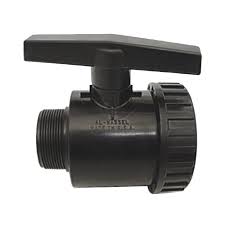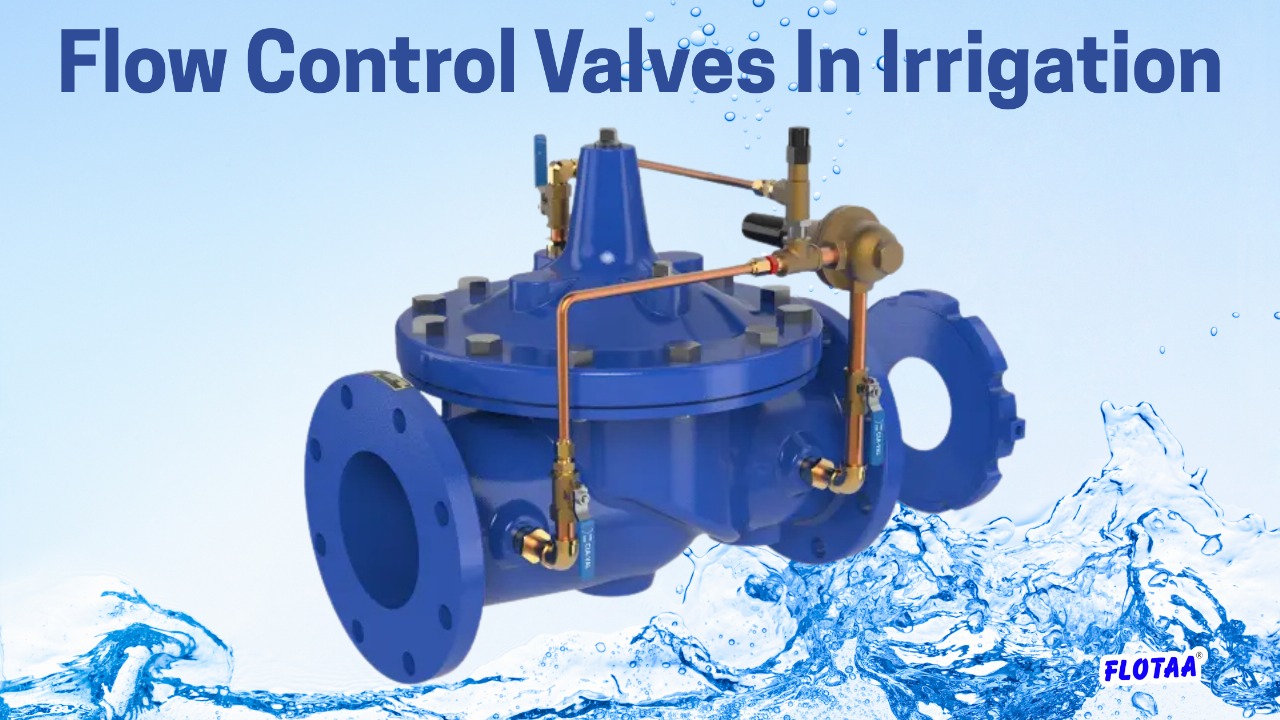In the irrigation process, there is a need to water crops evenly and efficiently. However, due to the pressure variations in the pipeline system’s branches, water often doesn’t flow uniformly. Some areas get a large amount of water, while others don’t get enough, or it may be dry. This is where flow control valves come in.
A flow control valve helps to irrigate the water at the same flow rate for all outlets of the pipeline branches. It helps maintain consistent water distribution, even when pressure changes occur.
What Are Flow Control Valves?
A flow control valve is a unique type of valve that controls liquids and gases at the expected flow rate. It helps to regulate the pressure and the speed of the fluid flow in a pipeline and provides desired flow rates for all outlets. It can be operated manually, electrically, or hydraulically.
Generally, in an advanced irrigation process, the flow control valves use an actuator, a smart control system, and sensors.
Electricity is required for the flow control valves to operate. By regulating the pressure and speed of water flow, these valves help reduce water wastage and ensure that crops get the right amount of water.
In this article, you can get a better idea of using the flow control valve in the irrigation system.
Working Principle For The Flow Control Valve
Flow control valves have a sensor, an actuator, a control system, and a feedback system.
A flow sensor helps to send an electric signal to the system control valves. This signal helps address the system’s generated flow rate.
The control system checks the desired flow rate of the user and then opens the valve by the actuator to allow the fluid to flow at the desired flow rate. It also monitors the flow rate continuously and fixes the position of the valve as per the signal from the feedback system for the desired flow rate in a controlled way.
The manual flow control valve also needs electricity, and it has a manual handle to operate by hand. When the handle turns anti-clockwise, the valve will be open and allow fluids through it, and when it turns clockwise, it will close.
How Do Flow Control Valves Help?
1. Protect Pumps And Systems
Flow control valves help to control high pressure and extreme flow in pipelines. It allows users to set the pressure at a predetermined rate, ensuring that the system operates within safe limits. This helps in reducing the risk of damage to the pump, pipes, and other equipment. Additionally, they help prevent issues like water hammer and pump overload.
2. Controlled Pipeline Filling
Flow control valves also help to fill empty pipelines for irrigation machines, center pivots, downhill sprinkler systems, low-pressure drip systems, and more.
When the irrigation system shifts over to the pipeline, the pipeline may be empty. For further irrigation, it needs to fill the pipeline at a controlled flow rate. If the flow rate is exceeded, then it causes the pipeline to burst, seal damage, and equipment loss.
Flow control valves help regulate this flow to prevent these issues, such as pressure loss, fluid energy loss, and pipeline bursts, ensuring the system operates smoothly and without damage.
3. Control The Fillup And Level In The Reservoir
During the irrigation process, the level of the reservoir drops, which can cause pressure drops for all users at the same time.
To overcome this condition, a level control valve regulates the drop of the reservoir and helps to set a reservoir filling process at a limited flow rate. This process helps to prevent a pressure drop during the irrigation process.
A level and flow control valve can prevent the overfilling and cavitation of the reservoirs and control the level of the water.
4. Control Flow Of Liquid During Filter Backwash
Filter backwash is a process of cleaning the water and filters as well. In this process, the flow control valves help to prevent the contaminants in the clean water and also prevent the filter elements from draining with the water. This process helps to save water and energy.
5. Balanced Flow Distribution
In irrigation systems, there are many open outlets that distribute the water simultaneously. Different outlets are set on different flow rates on each branch, so all outlets need the desired flow rate. The flow control valve helps to provide the desired flow rate to all outlets of the field.
Flow Control Valves For Irrigation Systems
1. Globe Valve
The globe valve is in a spherical body shape with controlled accuracy, and integral components provide a better control system. It works as a control valve, an isolation valve, and more.
They are essential in irrigation systems for regulating water flow precisely. Globe valves control water through filters, pumps, and tanks, allowing accurate adjustments for different sections of the system. While they can fully stop water flow and offer great control, they cause a slight pressure drop, making the flow a bit less smooth.
It is available in any size, which makes it versatile in nature. The control system, sensors, and feedback system are used in the agricultural process to irrigate the field precisely.

2. Ball Valve
A ball valve is generally used to shut off or turn on/off the flow of liquid. A centred ball helps to control the flow of water. It can be operated manually or using an actuator. In the irrigation process, it provides better flow control of water and distributes the water to different parts of the field.
A ball valve helps to minimize the waste in the water conservation process to control the water simply, and crops receive the necessary amount.

3. Butterfly Valve
Butterfly valves are shut and open valves containing rotating discs. It can operate quickly and easily. It contains a smart control system, an actuator, and a feedback system, which help operate remotely.
Butterfly valves are mostly used in mini sprinklers and drip irrigation methods. It controls the main supply water flow rate to start, stop, or regulate. It can be used to create different irrigation zones according to the crop types, soil conditions, and more.

4. Gate Valve
A gate valve is a fully opening and closing valve with a flow path. It consists of a gate that moves up and down perpendicular to the fluid flow.
It is extensively used in different types of irrigation systems to control the flow rate of the water due to the up-and-down motion of the fluid.
When a user requires a high flow rate, the gate valve completely opens the gate. It is a durable valve used in various applications.

Applications Of Flow Control Valves
Flow control valves are versatile in nature to regulate, control, and flow the pressure of various fluids. So, it is used for domestic, commercial, and industrial purposes. The applications of flow control valves are
- In the oil and gas industry, regulations are used to regulate crude oil, natural gas, and the distribution and transportation of fluids and gases.
- Used in Water Management to control the flow of water in wastewater treatment plants, dams, and irrigation networks.
- In domestic places, the kitchen and bathrooms need to maintain water pressure while reducing water flow.
- In chemical processing, it is used to manage the flow of chemicals and in the manufacturing process.
- Used in industrial automation systems to control the machinery and processes.
Conclusion
The flow control valves play an important role in the low-pressure irrigation process, such as drip irrigation, micro-irrigation, and low-pressure sprinklers. From equal distribution to regulating pressure and flow, it depends on the types of applications. If you want to install the flow control valve in your field, you need to read the valve specifications carefully. You may also take an expert’s suggestion.



0 Comments